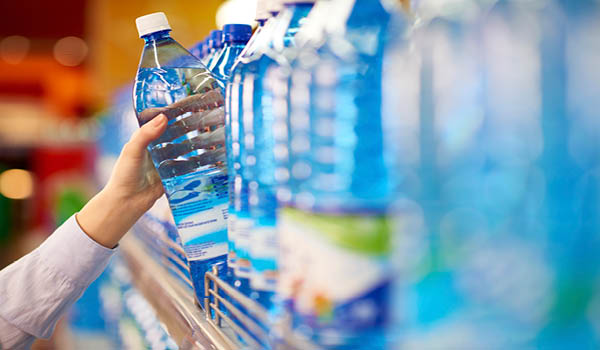In 2015, 5.3 million people (or 27.1 per cent of Australians aged 14 and over) drank bottled water in any given seven days – an increase on 2014, when 4.9 million Australians drank it in the same period.
The most popular brand is Mount Franklin, consumed by nearly 40 per cent of all bottled water drinkers in an average seven days; followed by Coles Natural Spring Water, 14.0 per cent; and Pump Pure Water, 12.8 per cent.
Overall, a greater proportion of Australian women (29.7 per cent) than men (24.5 per cent) drink bottled water in an average seven days, and this pattern is evident across most of the top 10 brands.
Cool Ridge and Fiji Water have the most pronounced gender skew towards women, while only Peats Ridge is consumed by slightly more men than women.
Australians under 50 are markedly more likely than older Aussies to drink bottled water, with its popularity peaking among the 25-34 year-old bracket (a third of whom drink it in an average week).
Around the country, bottled water consumption is most widespread in Western Australia, where 30.2 per cent of residents drink it in an average seven days. NSW is close behind, 29 per cent; whereas Tasmanians are below average at 22.3 per cent.
“A theme emerges pretty quickly when we look at Australia’s 10 most widely consumed bottled waters, brand names that evoke images of nature: Mount Franklin, Cool Ridge, Peats Ridge, Fiji Water) or purity (Aqua Pura, Coles Natural Spring Water,” Andrew Price, general Manager – Consumer Products, Roy Morgan Research, said.
“Selling something we can drink for free from the tap is a big ask, but by emphasising the natural and untouched quality of their water, these brands are implying (without stating outright) that they are better for the consumer than tap water.”
Mr Price said this message appears to be resonating with more women than men.
“Not only do [women] drink more of it, as explained above, but slightly more of them (2.2 million women compared to 2 million men) agree that ‘bottled water is better to drink than tap water’. Mind you, Cool Ridge’s particular success with women (who comprise 64 per cent of all Cool Ridge drinkers) may also have something to do with its ultra-cute advertising campaign featuring puppets of native fauna brainstorming ideas to market their brand.
“The challenge for brands in such a crowded market is to stand out on a shelf full of blue plastic bottles with similar labels and virtually indistinguishable contents – to distinguish themselves from a sea of competitors.”
Bottled water consumption in Australia: 10 most popular brands


